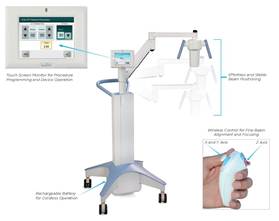Collagen Cross-linking Procedure
ACCELERATED COLLAGEN CROSS-LINKING (KXL)
Keratoconus is a progressive thinning disorder affecting the cornea, the front window of the eye. The cornea is made up of a number of layers and the middle layer, known as the stroma consists mainly of collagen fibrils aligned in a way to make the cornea transparent. Cross-linking is a process by which additional bonds are created between these collagen fibrils so as to make the corneal stroma more rigid and stronger. This technique uses an intense ultraviolet light (UVA) source and a photosensitising chemical (Riboflavin) to create the increased linkages (cross-linking) between the cornea’s collagen fibres. This technique has been shown to be extremely successful in arresting the progression of (stabilising) keratoconus and occasionally even producing small improvements in the condition. The same technique can also be used for some other ectatic conditions (those cause thinning) of the cornea.
Recent studies have also shown a beneficial role for crosslinking following LASIK laser vision correction.
Procedure Overview
Your surgeon will place anaesthetic drops in the eye to be treated and then an eyelid holder in your eye to keep it open throughout the procedure. A thin surface sheet of cells is marked by a manual cutting ring, a small amount of alcohol is then applied over this sheet to loosen it and thus enable the surgeon to roll it away from the area to be treated. The eye is then soaked in riboflavin eye drops (2 drops every 2 minutes for 10 - 20 minutes).
An ultraviolet (UVA) light is then shone on the cornea for 2 - 5 minutes and the procedure is complete. You will have some drops placed in your eye and a contact lens may be fitted. This lens is for protection as well as aiding in reducing discomfort. The whole procedure usually takes about 20 - 40 minutes.

Aftercare
After the procedure is completed, you will be given a full explanation regarding post-operative drops and tablets and follow up care. Protective eye shields will have been placed over the treated eye to prevent you from rubbing your eye for the rest of the day and also whilst sleeping during at night.
During the early post-operative period it is important not to squeeze or rub the eyes. Antibiotic and anti-inflammatory drops are used to prevent infection and decrease inflammation.
After leaving the clinic, patients are encouraged to rest/sleep for a few hours. The majority of patients will have moderate to severe discomfort beginning a few hours after the crosslinking procedure and this usually disappears within 24 - 48 hours. However, to ensure that the majority of patients have as comfortable a period after treatment as possible, all patients are given painkilling tablets to be taken every 4 – 6 hours for 24 – 48 hours.
A post operative follow up appointment takes place at the clinic approx. 7 days after the procedure, to ensure that your eye is healing as expected. There are a few restrictions for a week or so following your procedure, but as long as you follow your doctor’s instructions, you should be free to resume all of your normal activities thereafter.
Although KXL is a short procedure, you have had an operation and should therefore try to rest and relax for the first 24 – 36 hours after treatment. The best plan is to slightly darken a room and listen to some music, rather than trying to read or watch television. (Both reading and watching television can cause your eye to move under the patch and may make the discomfort greater.)
FAQs
Who is suitable for treatment? - Anyone who has progressive keratoconus may be suitable. Those patients with advanced keratoconus or severe scarring may not be suitable for treatment, especially if they have poor vision with contact lenses.
Is cross-linking a cure for Keratoconus? - Crosslinking is extremely successful in arresting the progression of Keratoconus. Studies have shown a success rate of more than 95% of those who have been treated. Whilst it is not a cure for the condition, it is likely to prevent the need for more invasive surgery such as corneal transplant.
What is the difference between your technique and traditional cross-linking? - Our accelerated crosslinking procedure takes on average 30 minutes to complete. This is considerably shorter than the ‘traditional’ method, which takes approx. 90 minutes and which is no more effective.